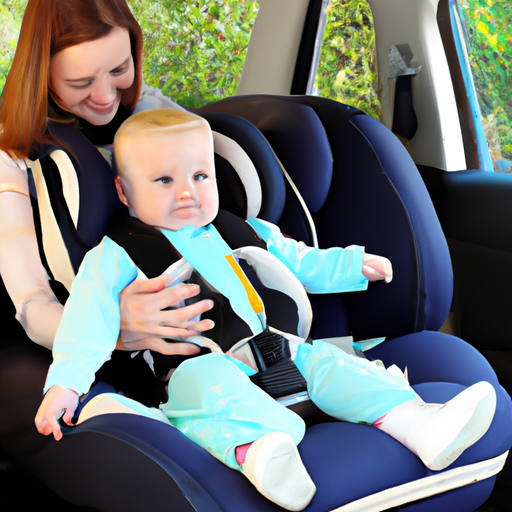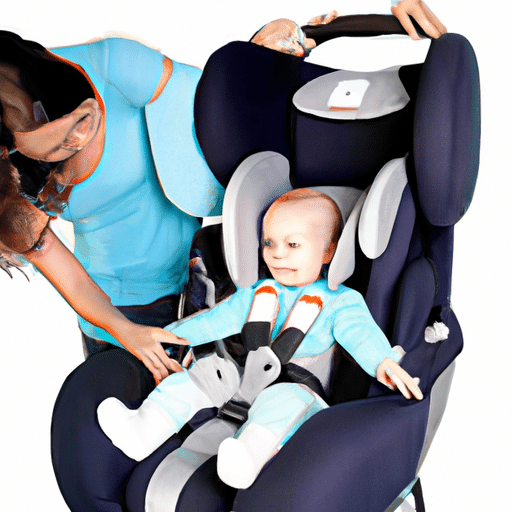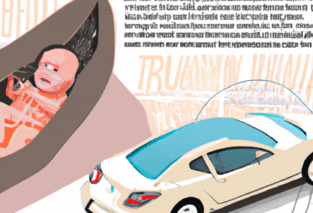Are you a new parent wondering when your baby will outgrow their infant car seat? It’s a common question that many caregivers have, as ensuring your child’s safety while on the road is a top priority. In this article, we will explore the factors that determine when a baby outgrows an infant car seat and provide you with essential information to help you make the right choice for your little one. From weight and height limits to age recommendations, we’ve got you covered on this important topic.
Factors to Consider
When determining when a baby outgrows an infant car seat, there are several factors that need to be taken into consideration. The weight, height, and age of the baby all play a role in determining when it is time to transition to a different car seat. By keeping these factors in mind, you can ensure that your child is safe and comfortable during car rides.
Weight
One of the primary factors to consider when determining if a baby has outgrown an infant car seat is their weight. Infant car seats typically have a minimum and maximum weight limit specified by the manufacturer. It is important to follow these weight limits, as they are designed to ensure that the car seat is able to properly protect your baby in the event of a car accident.
Height
In addition to weight, the height of your baby is also an important factor to consider when determining when they have outgrown their infant car seat. Just like weight limits, infant car seats also have minimum and maximum height limits. It is essential to adhere to these height limits to ensure that your baby is properly secured and protected while in the car.
Age
While weight and height are the primary factors to consider, age can also play a role in determining when a baby has outgrown an infant car seat. While there is no specific age at which a baby will outgrow their infant car seat, it is important to remember that weight and height are typically more accurate indicators of when it is time to transition to a different car seat.
Importance of Infant Car Seats
Infant car seats are an essential piece of equipment for any new parent. They provide both safety and convenience for you and your baby while traveling in a vehicle.
Safety
The safety of your baby is the number one priority when it comes to car seats. Infant car seats are specifically designed to keep your baby safe in the event of a car accident. They are built with impact-absorbing materials and secure harness systems that can greatly reduce the risk of injury. It is crucial to choose an infant car seat that meets safety standards and is properly installed in your vehicle.
Convenience
Infant car seats offer a level of convenience that is unmatched by other types of car seats. They are designed to be easily installed and removed from your vehicle, allowing you to effortlessly transfer your baby from the car to a stroller or other mode of transportation. Many infant car seats are also compatible with travel systems, which allow you to seamlessly transition your baby from the car to a stroller without disturbing their sleep.

Infant Car Seat Types
There are several different types of infant car seats available on the market, each with its own unique features and benefits. Understanding the different types can help you make an informed decision when choosing the right car seat for your baby.
Rear-Facing Only
Rear-facing only car seats, also known as infant carriers, are designed for newborns and infants up to a certain weight and height. These car seats typically have a detachable base that can remain installed in your vehicle, making it easy to transfer your baby in and out of the car without disturbing them. Rear-facing only car seats provide excellent support for your baby’s head, neck, and spine, which is important for their safety and development.
Convertible Car Seats
Convertible car seats are designed to grow with your child. They can be used in a rear-facing position for infants and then converted to a forward-facing position for older children. Convertible car seats have higher weight and height limits compared to rear-facing only car seats, allowing your child to use them for a longer period of time. It is important to note that convertible car seats are typically not portable and cannot be used outside of the vehicle.
3-in-1 Car Seats
3-in-1 car seats, also known as all-in-one car seats, are the most versatile option available. They can be used as a rear-facing seat for infants, a forward-facing seat for older children, and eventually, as a booster seat for when your child is ready to use the vehicle’s seat belts. 3-in-1 car seats have the highest weight and height limits, making them a cost-effective option for parents who want a seat that will last throughout their child’s early years.
Types of Weight Limits
Weight limits are a crucial factor to consider when determining whether a baby has outgrown an infant car seat. There are two types of weight limits that you need to be aware of: minimum weight limits and maximum weight limits.
Minimum Weight Limit
The minimum weight limit of an infant car seat is the lowest weight at which a baby can safely use the seat. It is important not to use an infant car seat before your baby reaches the minimum weight limit specified by the manufacturer. Using a car seat before your baby meets the minimum weight requirement can put them at risk of inadequate support and protection.
Maximum Weight Limit
The maximum weight limit of an infant car seat is the highest weight at which a baby can safely use the seat. It is important to transition your baby to a different car seat once they exceed the maximum weight limit of their infant car seat. Using a car seat beyond its weight limit can compromise your baby’s safety and increase the risk of injury in the event of a car accident.

Types of Height Limits
Height limits, much like weight limits, are an important consideration when determining if a baby has outgrown an infant car seat. Similar to weight limits, there are two types of height limits: minimum height limits and maximum height limits.
Minimum Height Limit
The minimum height limit of an infant car seat is the lowest height at which a baby can safely use the seat. It is essential not to use an infant car seat before your baby reaches the minimum height limit specified by the manufacturer. Using a car seat before your baby meets the minimum height requirement can result in inadequate support and an increased risk of injury.
Maximum Height Limit
The maximum height limit of an infant car seat is the highest height at which a baby can safely use the seat. It is crucial to transition your baby to a different car seat once they exceed the maximum height limit of their infant car seat. Using a car seat beyond its height limit can compromise your baby’s safety and increase the risk of injury in the event of a car accident.
Guidelines and Recommendations
When it comes to determining when a baby has outgrown an infant car seat, it is important to consider both the manufacturer’s guidelines and government regulations.
Manufacturer Guidelines
Each infant car seat comes with specific guidelines and recommendations outlined by the manufacturer. These guidelines indicate the weight and height limits for each specific car seat model. It is crucial to carefully read and follow these guidelines to ensure that your baby is safe and properly secured.
Government Regulations
Government regulations regarding car seats vary from country to country. It is essential to familiarize yourself with the specific car seat regulations in your area to ensure that you are in compliance with the law. Government regulations often outline the minimum requirements for car seat use and may provide additional guidelines for keeping your child safe while in a vehicle.

Signs that Baby has Outgrown Infant Car Seat
While weight and height limits are the primary indicators that a baby has outgrown an infant car seat, there are also some physical signs to look out for.
Head Protrusion
If your baby’s head is protruding over the top of the car seat, it may be a sign that they have outgrown it. An infant car seat should provide adequate head support, and if your baby’s head is no longer within the seat’s protective shell, it may be time to consider transitioning to a different car seat.
Shoulder Height
The shoulder straps of an infant car seat should be positioned at or slightly below your baby’s shoulders. If the shoulder straps are consistently above your baby’s shoulders even when adjusted to the highest position, it may be an indication that your baby has outgrown their infant car seat.
Weight Limit
The weight limit specified by the manufacturer is a clear indicator of when your baby has outgrown their infant car seat. Once your baby exceeds the maximum weight limit of their car seat, it is important to transition them to a different seat that is appropriate for their weight and height.
Transitioning to a Different Car Seat
When it is time to transition your baby to a different car seat, there are a few options to consider.
Convertible Car Seats
Convertible car seats are a popular choice for transitioning from an infant car seat. They can be used in a rear-facing position for infants and then converted to a forward-facing position for older children. Convertible car seats typically have higher weight and height limits compared to rear-facing only seats, allowing your child to use them for a longer period of time.
3-in-1 Car Seats
For parents looking for a car seat that can grow with their child, 3-in-1 car seats are a great option. These seats can be used as a rear-facing seat for infants, a forward-facing seat for older children, and eventually, as a booster seat. 3-in-1 car seats offer the highest weight and height limits, making them a cost-effective choice for parents who want a seat that will last for multiple stages of their child’s growth.

Frequently Asked Questions
Can my baby’s legs touch the car seat?
It is common for parents to wonder if their baby’s legs should be touching the car seat when using an infant car seat. In general, it is perfectly normal for a baby’s legs to bend at the knees and touch the back of the car seat. This positioning is actually preferred, as it provides optimal support for your baby’s legs and helps to distribute the forces of a car crash more evenly.
Should I move my baby to a forward-facing seat after outgrowing an infant car seat?
It is recommended to keep your child in a rear-facing position for as long as possible, even after outgrowing an infant car seat. Rear-facing car seats provide better protection for your child’s head, neck, and spine, reducing the risk of injury in the event of a car accident. It is recommended to transition your child to a forward-facing seat only when they have reached the maximum weight and height limits of their rear-facing car seat, as specified by the manufacturer.
Conclusion
Determining when a baby has outgrown an infant car seat is an important consideration for the safety and well-being of your child. By taking into account factors such as weight, height, and age, and following the guidelines and recommendations provided by the manufacturer and government regulations, you can ensure that your child is properly secured and protected while traveling in a vehicle. Remember to always prioritize safety and choose a car seat that is appropriate for your child’s size and age.






